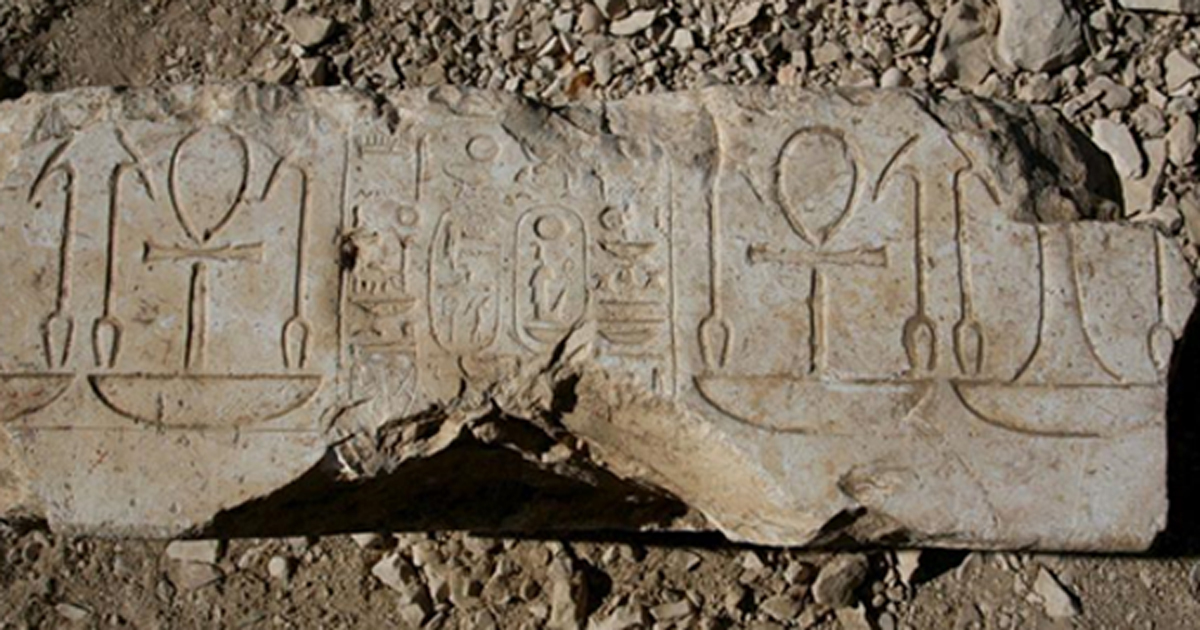Archaeologist Accidentally Discovers Lost Temple of Thutmose I, Hidden in Plain Sight for 50 Years
Thousands of stone blocks that were “hiding” for ages in storage near Luxor proved to be the remains of the temple of Thutmose I, which has been searched for by archaeologists for some time. A Polish Egyptologist named Jadwiga Iwaszczuk was the one who identified the fragments of the temple, which had previously been misidentified.
Discovery Happens Somewhat Fortuitously
Thutmose I organized great building projects during his reign (1506–1493 BC), including many temples and tombs. Actually, it is believed that he was the first Egyptian king who ordered the construction of a tomb for himself in the Valley of the Kings while he was alive. Thousands of years after his death, the remains of his temple come to prove his rich architectural legacy.
Science & Scholarship in Poland reported a few days ago that an Egyptologist from the Institute of Mediterranean and Oriental Cultures of the Polish Academy of Sciences named Jadwiga Iwaszczuk, made an accidental discovery of beautifully decorated fragments of blocks from which the temple was constructed. The remains were positioned in the storage of the Egyptian Ministry of State for Antiquities, in a tomb adapted for this purpose in Theban Necropolis near Luxor.
- Hatshepsut: The Queen who became King
- Did Hatshepsut, Number-One Female Pharaoh, Have a Secret Lover?
- 3,200-Year-Old Ancient Egyptian Mummy Discovered in Great Shape in Luxor

Remains of the temple of Thutmose I in Gurna: Today a single column base is visible on the surface. (Image: J. Iwaszczuk)
However, the discovery might not be as accidental or coincidental as it appears to be at first glance. Right next to the location where the discovery took place is the house where Polish archaeologists reside during research at the temple of Hatshepsut (under the supervision of Dr. Zbigniew E. Szafranski from the Polish Centre of Mediterranean Archaeology UW). As a consequence, Polish Egyptologists visited the storage pretty often in search of possible blocks from the female pharaoh’s temple.
Clear Evidence Reveal Temple’s “Owner”
The fragments in storage came from excavations conducted by one of the several Egyptian scientists who were involved with the site’s exploration back in the 1970s. Iwaszczuk said that the archaeologist falsely thought that what he had discovered was the temple of Cha-achet from the times of the reign of Hatshepsut. However, the remains of that temple were discovered just a few years ago by French archaeologists in the temple of Ramesses II - the Ramesseum. “My research had unexpected results. It turned out that all of the discovered fragments came from the temple of Thutmose I. The location of the temple - in the vicinity of the temple Thutmose of Thutmose III - had been known for more than half a century. Until now researchers misidentified it,” Iwaszczuk told Science & Scholarship in Poland.
The official verification that the temple belongs to Thutmose I is his name, Khenemet-ankh, which is familiar to Egyptologists from various written sources, and which was found on several architectural fragments deposited in the storage.

Fragment of architrave with the name of the Temple of Thutmose I, Khenemey ankh. (Image: J. Iwaszczuk)
Detailed Analyses Reveals Further Information
Epigraphic analyses conducted by the Polish Egyptologist revealed further information such as that the temple for Thutmose I was commissioned by his daughter Hatshepsut. Two types of stone, limestone and sandstone were used for its construction, which Iwaszczuk considers a very interesting thing, due to the fact that during Hatshepsut’s reign, limestone was the main material for constructions. For that matter, Hatshepsut’s entire temple in Deir el-Bahari was built from limestone. In her father’s temple though, all the supporting elements of the walls were made of sandstone, and the filling and walls were made of limestone.
- Ta Set Neferu: Tombs of the Princes and Princesses – Part II
- A Pharaoh’s Exploits Recorded for All Time: The Battle of Megiddo—Part I
- Archaeologists identify Temple of Hatshepsut, the female Pharaoh the ancients tried to erase
Another interesting thing Iwaszczuk noticed about the temple’s art is how one of the first battle scenes with chariots known from the area of ancient Egypt was depicted on the temple’s walls. Additionally, the very good condition of the fragments made researchers conclude that the temple had been renovated at some point.

Reconstructed fragment of a battle scene with chariots. (Image Credit: J. Iwaszczuk)
So far, Iwaszczuk's team has drawn nearly five thousand stone blocks and photographed over seven thousand of them. "Finally, it reached its sad end: like many other Theban temples, it served as a quarry for the material for stone bowls. Only unused post-production waste was left, including the fragmented decorative reliefs, which today we use to try to recreate the full shape of the temple," Iwaszczuk told Science & Scholarship in Poland, reassuring that comprehensive work is already being performed by her team in order to recreate the entire scenes that once adorned the impressive temple.

A stone head, most likely depicting Thutmose I, at the British Museum (CC BY-SA 3.0)
Top image: The base of the statue, which allowed to identify the remains the building discovered by Dr. Abu el-Ayun Barakat. (Photo Credit: J. Iwaszczuk)

















